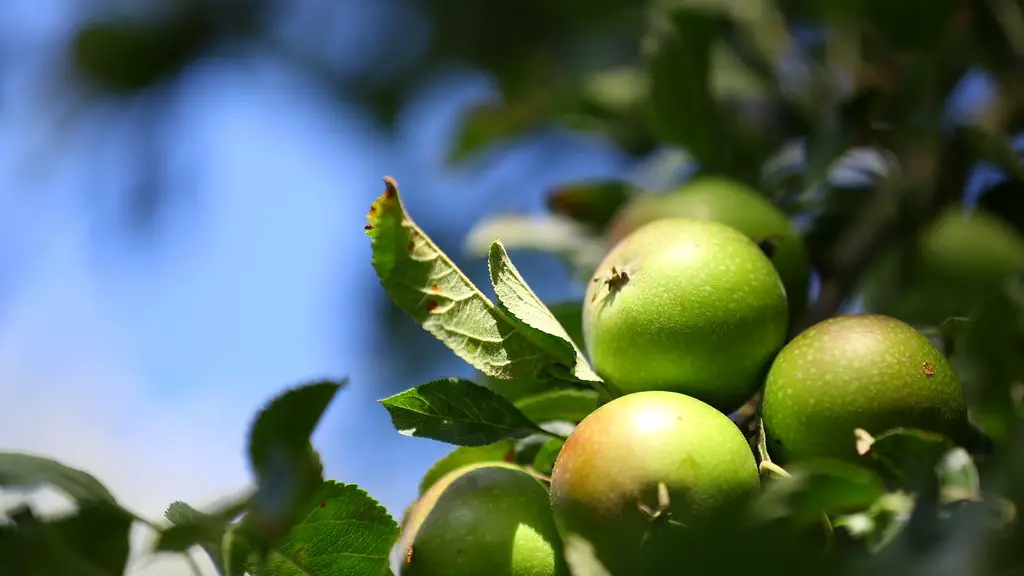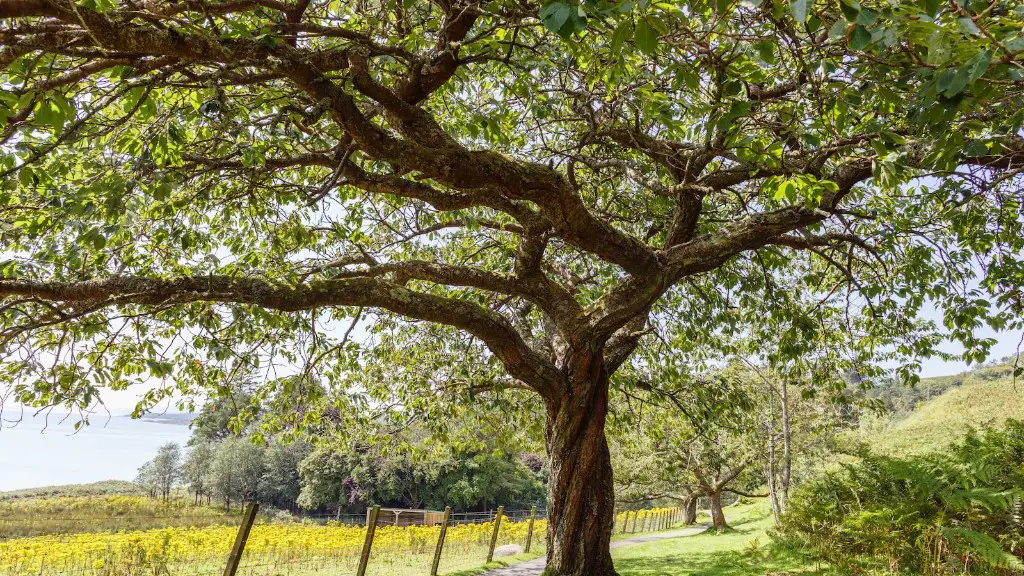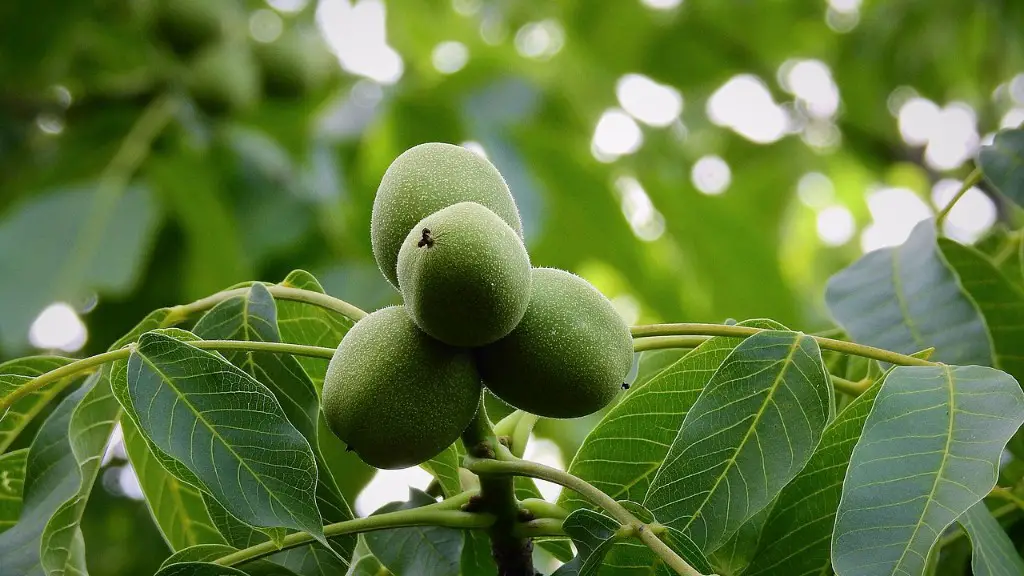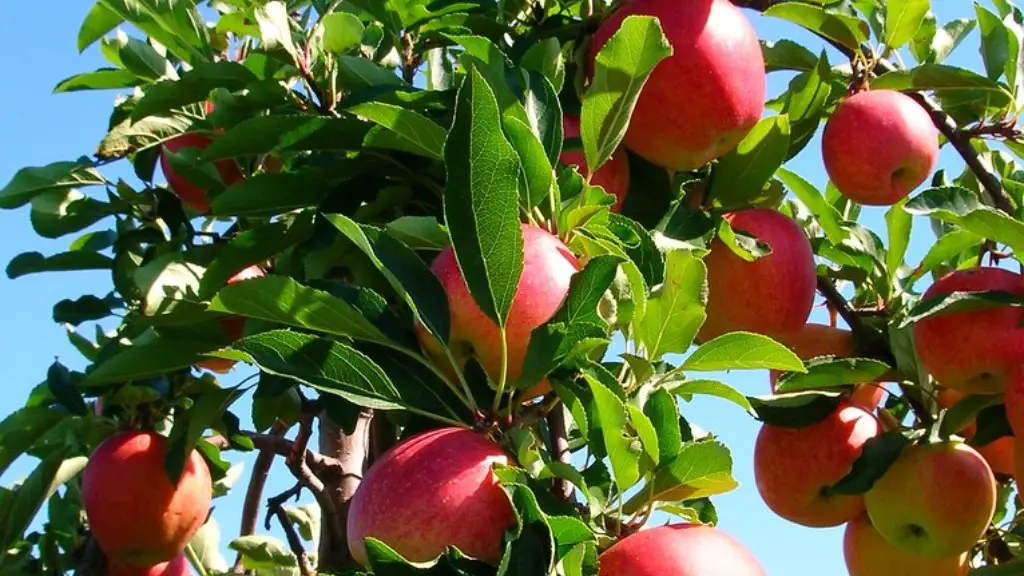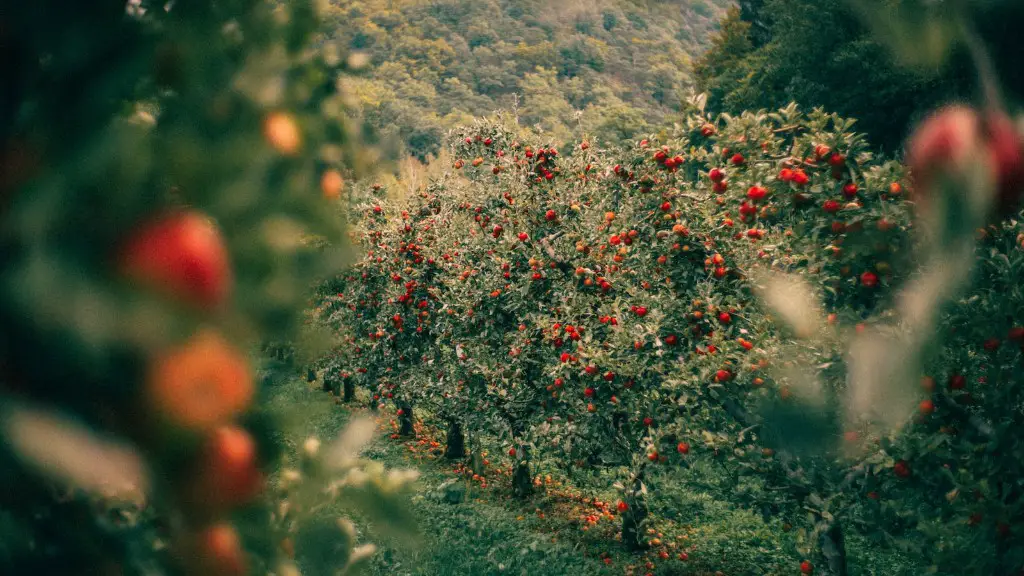Pruning an Apple tree can be an intimidating task, but it is necessary to maintain healthy and productive growth in the tree. Knowing when and how to prune an apple tree is key to its success. The best time to prune your apple tree is during the early spring, when the tree is still dormant.
Pruning your apple tree in early spring is recommended to remove any dead, diseased or broken branches. Dead wood should also be removed, which will reduce the risk of diseases from taking hold in the tree. Additionally, removing any suckers found at the base of the tree will help keep the tree in shape and allow it to put more energy into growing.
Thinning out the branches of an apple tree is important in achieving optimal coverage, allowing the sunlight and air circulation to reach all of the branches, encouraging production of fruit. When pruning an apple tree, also consider removing any branches that are rubbing up against each other and any branches that are growing around the trunk of the tree. This will help prevent disease or pest infestation that can attack the tree.
The best pruning tools to use are a pair of long-handled pruners and a handsaw. Before starting pruning, consider taking a look at a diagram of the apple tree’s structure to help you understand the growth pattern of the tree, as it will make it easier for you to prune correctly. Always aim to keep the branch angles at least 45 degrees.
When pruning an apple tree, you should always make sure that your cuts are made cleanly and straight. If your cuts are crooked, it can leave an open wound for disease to enter the tree. Also, if you need to cut a larger branch off of the tree, it’s important to make a three-cut technique when removing it, as this will help prevent the branch from ripping off and causing damage to the tree.
Finally, after the pruning is done, it’s important to inspect the area around the tree for any signs of disease or pest damage. If you do find any signs of this, it’s important to treat the tree immediately to prevent it from spreading throughout the tree and harming it.
Benefits of Pruning an Apple Tree
Pruning an apple tree offers a number of benefits for both the health of the tree and its potential for producing fruit. Pruning helps to ensure that the tree has a strong, balanced structure and will be able to bear the weight of the fruit more easily. It also helps to produce larger, better quality fruits. Pruning branches can help to improve air circulation and light penetration, making it easier for the tree to photosynthesize and use energy.
Pruning is also beneficial for maintaining the overall health of the tree. Pruning dead and diseased branches can help to prevent further damage and the spread of disease throughout the tree. Additionally, thinning out overcrowded branches can reduce competition for resources between the branches, leading to improved fruit production.
Finally, pruning offers an aesthetic benefit to your apple tree, as it can help keep the tree looking neat and well-managed. Pruning can also be used to shape your tree, making it easier to maintain and even more attractive. Pruning can help make your apple tree the envy of your neighbours.
Best Time for Pruning an Apple Tree
The best time to prune an apple tree is in the early spring before it begins to produce fruit. Pruning when the tree is still dormant is recommended, as it reduces the risk of shock to the tree. When pruning an apple tree in the early spring, you should still be careful to avoid any major pruning, as it can cause improper growth.
Additionally, the best time to prune an apple tree varies depending on the type of apple tree. For example, a flowering apple tree should only be pruned in the winter or in late spring, as this will not interfere with its flowering process. Generally, though, an apple tree should be pruned every year in the early spring.
It’s also important to consider when the buds start to form on the tree before beginning pruning. Pruning should be done before any buds form, as if you prune after the buds are already developing, it could cause injuries or delays in the timing of the apple tree’s growth. Waiting for the buds to form before pruning your apple tree is often the safest bet.
Finally, it’s important to consider your environmental conditions when determining when to prune your apple tree, as extreme weather conditions such as heavy snowfall, high winds, and cold temperatures can all interfere with thetree’s responses to pruning. If you are expecting adverse conditions, delay your pruning until the weather has improved.
Tools Needed for Pruning an Apple Tree
Pruning an apple tree requires a few specific tools, such as loppers, pruning shears, and a handsaw. Loppers should be used for removing larger branches, while pruning shears should be used for smaller branches. A handsaw should be used to cut larger branches that cannot be removed with the other tools.
When using a handsaw, it’s important to make sure it is clean and sharp. Sharp tools will make cleaner, more precise cuts, which will help reduce the risk of disease and damage to the tree. It’s also a good idea to dip the saw blades in rubbing alcohol after each use to help prevent the spread of disease.
It’s also important to wear protective gear when pruning. Gloves, safety glasses, and a mask can help reduce the risk of injury and keep you safe while working on the apple tree. By taking the proper safety precautions, you can be sure that your pruning project will go as smoothly as possible.
Finally, it’s important to take into consideration the size of your apple tree before beginning pruning. If the tree is too large for the tools you have on hand, it may be necessary to hire a professional to help with the job. This can ensure that your apple tree is properly pruned and that no damage is done to the tree during the process.
Methods for Pruning an Apple Tree
There are several different methods that can be used when pruning an apple tree, depending on what shape or size you are aiming for. One of the most common methods is called crown thinning, which involves removing a small number of branches to reduce the overall density of the tree. This can help improve air circulation and light penetration throughout the tree, which can help produce larger, better quality fruits.
Another method is called selective pruning or selective removal, which involves selectively removing branches to help develop or maintain the desired shape of the apple tree. This type of pruning can also help improve air circulation and light penetration throughout the tree. Additionally, it can help reduce overcrowding, which can lead to improved fruit production.
Finally, another method for pruning an apple tree is called rejuvenation pruning. This involves removing most of the branches from the entire tree with the aim of revitalizing the tree. It’s important to note that this should be done only as a last resort, as it can be a drastic measure that may not achieve the desired results.
Pruning Techniques for an Apple Tree
When pruning an apple tree, it’s important to use the proper pruning techniques. This can help reduce the risk of damage to the tree and help ensure that your cuts are clean and precise. Generally, pruning cuts should be made just outside the branch collar to help ensure proper healing.
It’s also important to use a three-cut technique when removing larger branches. This will help prevent the branch from splitting off from the tree, causing irreparable damage. Additionally, it’s important to take into consideration the branch angles when pruning, as pruning too low can cause the branch to become weak, thus leading to breakage.
Finally, it’s important to remember that some Apple trees may require more pruning than others. If a tree is in need of more pruning than what is recommended, contact a professional tree service to assess the tree and provide you with the right advice on how to best prune it.
